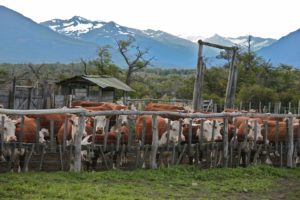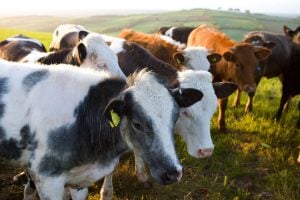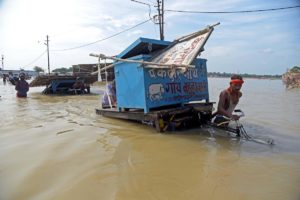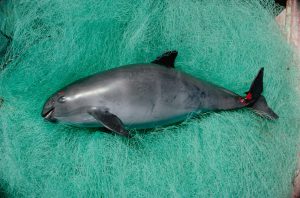With the largest amount of cultivatable land in the world, Latin America plays a key role in global food production. The region has experienced significant agricultural expansion in the last 50 years, increasing the cultivated area from 560 to 740 million hectares – with devastating environmental consequences.
Much land today is deforested or degraded and its biodiversity decimated. Preventing further expansion will be central to combating climate change and ensuring food supplies, according to a new report by the Intergovernmental Panel on Climate Change (IPCC).
According to the IPCC, which brings together climate scientists worldwide, the misuse of land can exacerbate global warming and worsen its effects.
“Land is already being affected by climate change. This has a particular emphasis on Latin America as a food-producing region,” said Eduardo Calvo Buendía, a Peruvian researcher and IPCC co-chair.
“The use of the land can contribute to the solution of the problem but making progress only with this sector is not enough.”
Victims and victimisers
The land and how human beings use it both drive and feel the effects of climate change, according to Esteban Jobbágy, an Argentine researcher at the IPCC.
Population growth and changes in diets since the middle of the last century have led to unprecedented rates of land and water use. Agriculture consumes around 70% of the world’s freshwater.
“Latin America still has a lot of land that can be used for agriculture. This report opens the eyes of decision-makers in the region,” Jobbágy added.
Agriculture, forestry and other land uses generate 23% of greenhouse gas emissions globally. But its expansion, at the expense of native forests, not only generates more emissions but also degrades soils and limits its capacity to absorb emissions.
14%
of the world's degraded land is in Latin America
There are currently more than two billion hectares of degraded land in the world, 14% of which is in Latin America, according to the FAO. Degradation occurs due to deforestation, intensive application of agrochemicals and erosion.
Land degradation is also associated with poverty. Farmers with fewer resources have less access to land and water and work with low-quality soils that are highly vulnerable. Around 40% of the world’s most degraded land is in areas with high levels of poverty.
“The report is a call to strengthen Latin America’s agriculture systems. We must stop deforestation processes, promote crop rotation systems and strengthen agroecological production,” said Miguel Taboada, a researcher at the Institute of Agricultural Technology of Argentina (INTA).
Food security
Latin America has just 8% of the world’s population but 23% of potentially arable land. Its global share of currently cultivated land is 12%, while it also has 46% of tropical forests and 31% of the planet’s freshwater, according to the FAO.
Agricultural systems are not resilient enough
This makes the region a central actor in guaranteeing food security, which today is threatened by climate change. Rainfall patterns are changing and extreme weather phenomena increasingly common, putting agricultural production and the Latin American economy at risk.
IPCC projections are not good, especially for tropical countries in Latin America such and Brazil and Colombia, which would see a drop in crop yields as a result of global warming.
“The tropical countries of South America will be the most affected in the region, with negative consequences on their economy. Their agricultural systems are not resilient enough,” said Louis Verchot, a US researcher at the IPCC. “Both small and large scale agriculture will face difficulties.”
50%
of Latin American land could become desert by 2050
Depending on different climatic scenarios, the increase in temperature in Latin America could vary from two to six degrees Celsius, according to the IPCC. At the same time, by the 2050s it is estimated that around 50% of the region’s agricultural land will be affected by desertification.
Diet changes
Livestock occupies a central role in Latin America but if consumers can be persuaded to eat less meat because for climate and health reasons, this could change the sector’s plans to expand.
Lower consumption of animal products could give us more chances to combat climate change
World meat production has tripled in the last four decades, generating significant changes in eating patterns. Today two billion people are overweight or obese, which is often linked to increased meat consumption.
In its new report, the IPCC highlighted the benefits of moving from a meat and dairy-based diet to a plant-based diet. This brings “great opportunities” to mitigate and adapt to climate change, in addition to bringing health benefits, promoting less extensive livestock systems (such as silvopastoral models) and reducing pressure on native forests.
Latin America and the Caribbean is responsible for more than a quarter of world beef production and 20% of poultry. In the last decade, exports of beef from the region have more than doubled, while exports of pork and poultry from Brazil and Chile have more than quadrupled.
“It is questioning how sustainable this food chain is and in Latin America, it can have great consequences,” said Jobbágy, “Lower consumption of animal products could give us more chances to combat climate change.”
The path forward
Along with dietary changes, the IPCC highlighted a series of short- and long-term solutions for Latin America.
There are actions that would have immediate positive effects, such as conserving wetlands and forest ecosystems, which store huge amounts of greenhouse gases that are released when they are destroyed. Other interventions, like reforestation, need decades to be effective.
Land must remain productive to maintain food security given expected global population increases and the negative impacts of climate change, the IPCC said.
Experts highlighted Latin America’s great potential to drive change as a principal food producer. So-called “climate-smart agriculture” must advance without degrading soil. There is also the potential to increase productivity in currently cultivated land, without expanding production and encouraging deforestation.
“The region can do much more to manage its soils sustainably,” Verchot said. “You can maintain the productivity of currently cultivated soils so you don’t have to deforest more areas. For this, governments have to invest in rural areas. ”









